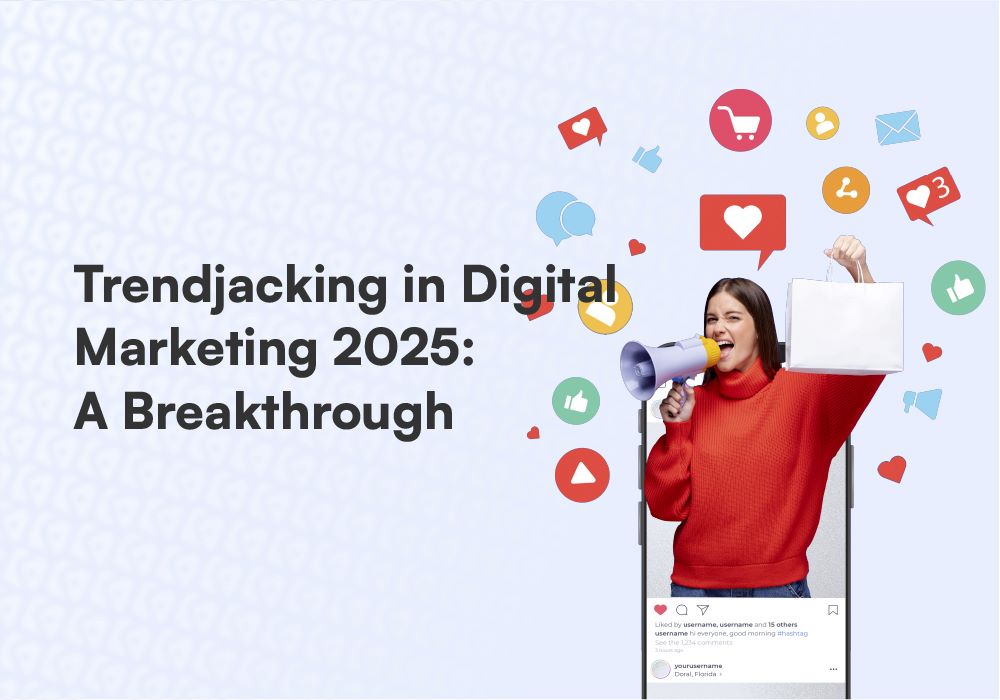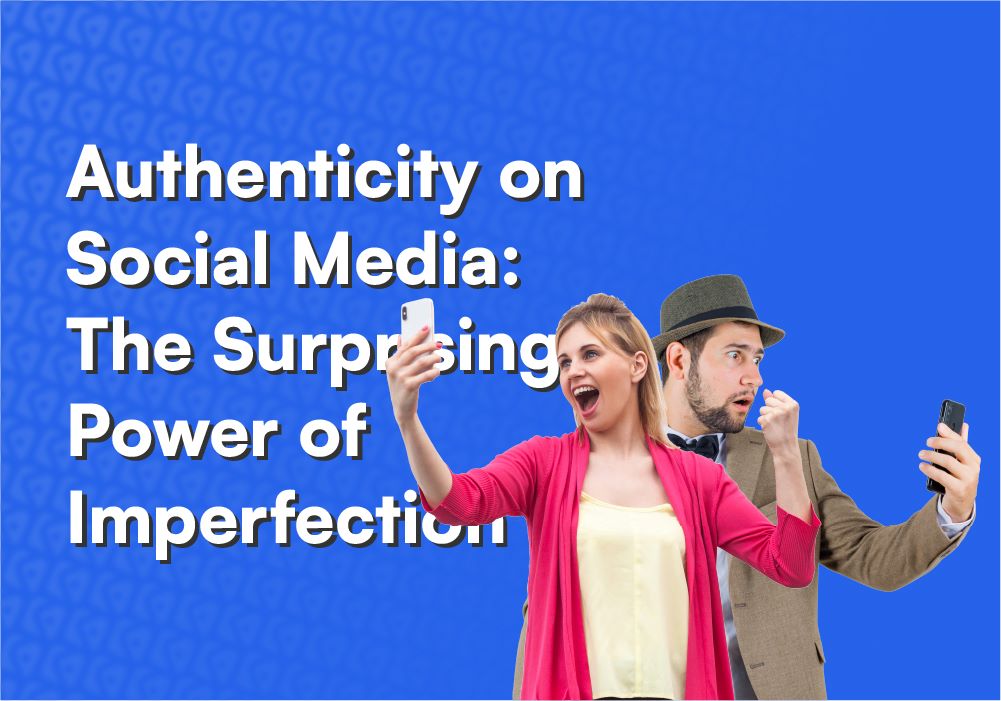O que significa “Trendjacking em Marketing Digital” para as marcas?
O que são tendências? – Definição geral
Uma tendência descreve um desenvolvimento ou mudança geral no comportamento humano ou nas estruturas sociais que segue uma direção específica.
As megatendências são desenvolvimentos duradouros e profundos com impacto global. Elas moldam a sociedade, a economia e a tecnologia por décadas. Exemplos incluem digitalização, urbanização e mudança climática – todas altamente relevantes para o marketing digital.
Em geral, as tendências podem ser divididas em três categorias:
- Megatendências (longo prazo, global)
- Tendências do consumidor ( médio prazo, orientado pelo mercado )
- Tendências de produtos (curto prazo, muitas vezes sazonal)
Estas categorias diferem principalmente na sua longevidade e alcance.
Por que as marcas usam Trendjacking no marketing digital
Trendjacking no marketing digital é uma estratégia onde marcas e criadores aproveitam deliberadamente tópicos virais atuais para tornar seu conteúdo mais relevante, visível e impactante. Os benefícios dessa abordagem são diversos:
- Visibilidade aumentada Ao integrar tópicos populares, uma marca passa a fazer parte de conversas em andamento e alcança um público mais amplo.
- Maior engajamento As pessoas respondem mais ao conteúdo que tem a ver com discussões sociais atuais ou tendências da cultura pop – curtidas, compartilhamentos e comentários aumentam naturalmente.
- Produção de conteúdo econômica: Como as tendências já fazem parte do discurso público, o conteúdo pode ser criado de forma mais rápida e econômica.
- Relevância e atualidade: Marcas que participam de conversas em alta parecem acessíveis e presentes – um fator importante na percepção da marca.
- Aumento no tráfego: Hashtags populares e tópicos virais direcionam a atenção especificamente para o conteúdo de uma marca.
- Fidelidade do cliente mais forte: Ao envolver-se com os interesses e emoções do seu público, as marcas criam confiança e proximidade a longo prazo.
Se você quer aprender sobre as diferenças de conteúdo nas plataformas populares de redes sociais, clique em: Diferenças de Conteúdo.
Riscos do Trendjacking no Marketing Digital – O que as marcas devem ter em mente
Cada vez mais marcas e criadores estão usando trendjacking no marketing digital pra ganhar alcance e atenção de curto prazo com tópicos virais. A estratégia pode funcionar – mas não é isenta de riscos. Ainda mais quando a tendência escolhida não combina com a identidade da marca, o que parece uma jogada inteligente pode rapidamente virar um erro estratégico.
O que gera cliques a curto prazo pode custar a confiança a longo prazo. Se o trendjacking no marketing digital parecer inautêntico ou puramente oportunista, o resultado pode ser um dano de reputação real.
Quando a tendência não combina com a marca
Um hype viral pode certamente gerar burburinho – mas só se combinar com a identidade da marca. Caso contrário, a campanha logo parece forçada ou aleatória. As pessoas percebem na hora quando uma marca se esforça só pra entrar na conversa.
O problema: uma tentativa apressada de se adaptar a uma tendência pode diluir a mensagem própria da marca. Em vez de promover proximidade, ela cria distância. A marca perde clareza – e, com isso, credibilidade. Isso fica ainda mais crítico quando a tendência não ressoa com o público-alvo ou a oferta do produto. Nesse caso, os clientes existentes se sentem alienados em vez de engajados.
Trendjacking no marketing digital, portanto, exige sensibilidade: só as tendências que realmente combinam com a identidade da marca e o público devem ser consideradas.
Riscos reputacionais por conteúdo insensível
As tendências costumam ser passageiras – e às vezes sensíveis. Entrar nelas sem pensar bem pode te levar direto a armadilhas culturais ou éticas. Sem entender bem o contexto, uma ideia inteligente pode rapidamente virar um desastre de relações públicas.
Especialmente no ambiente delicado do trendjacking no marketing digital, as marcas devem sempre avaliar as tendências quanto a possíveis controvérsias e riscos de comunicação. E se surgir alguma crítica: mantenha a calma, comunique de forma transparente e esteja aberto a correções. Assim, a reputação pode ser protegida – mesmo no meio de uma tempestade.
Demais da conta: quando pegar carona em tendências vira rotina
Trendjacking no marketing digital pode funcionar – mas não como estratégia permanente. Marcas que estão sempre atrás da próxima hype logo parecem sem originalidade. O público percebe: isso é sobre atenção, não valor de verdade.
Por isso, trendjacking deve sempre fazer parte de uma estratégia de conteúdo bem pensada. É melhor engajar de forma seletiva com tendências que encaixam na marca e construir algo a longo prazo – ao invés de embarcar em todas as modinhas passageiras.
As marcas são inteligentes ao não perseguir todas as tendências, mas sim escolher aqueles temas que se alinham com a sua mensagem e contribuem para a construção de marca a longo prazo. Assim, o trendjacking no marketing digital não vira uma armadilha, mas uma oportunidade estratégica.

O gráfico de barras intitulado “2025 Trendjacking – Estatísticas de Marketing Relevantes”, proveniente de Amra & Elma , ilustra cinco métricas-chave que refletem os desenvolvimentos atuais em marketing digital e trendjacking:
- Número de usuários de redes sociais (5,24 bilhões): Destaca o alcance enorme de possíveis micro-tendências.
- Uso médio diário de redes sociais (143 minutos): Destaca o quão profundamente os usuários estão envolvidos com seus feeds.
- Gasto global em anúncios nas redes sociais (USD 276,7 bilhões): mostra que, apesar do ceticismo sobre viralidade, ainda há investimentos significativos em publicidade social.
- Adoção de Social Listening (62%): Demonstra que as marcas cada vez mais dependem do monitoramento de tendências em tempo real.
- Uso de IA Generativa por Marketers (83%): Indica o papel crescente da IA na produção rápida de conteúdo direcionado às tendências e específico para o público.
Trendjacking está ficando mais preciso, baseado em dados e culturalmente integrado – não mais barulhento, mas relevante para os públicos certos.
Um exemplo de Trendjacking em Marketing Digital
Em 2017, a Pepsi lançou uma campanha publicitária com Kendall Jenner que tentou aproveitar movimentos de protesto socialmente relevantes para transmitir uma sensação de união. A mensagem foi duramente criticada por trivializar movimentos políticos como Black Lives Matter. A Pepsi retirou a campanha poucas horas após o lançamento e pediu desculpas publicamente, já que o vídeo foi visto como insensível.
Fontes: The Guardian, Qui 6 Abr 2017
Trendjacking no marketing digital sem uma conexão autêntica pode causar danos duradouros à marca – um aviso claro antes de seguir cegamente uma hype.
Conclusão – Trendjacking em Marketing Digital 2025: Relevância acima de Reação
Mesmo em 2025, trendjacking continua sendo uma ferramenta poderosa no marketing digital – mas sua eficácia depende cada vez mais de profundidade estratégica e sensibilidade cultural. Marcas que fazem mais do que apenas imitar tendências e, ao invés disso, as integram de forma pensada na sua identidade e comunicação com o público conseguem mais do que atenção de curto prazo: elas criam relevância genuína. Uma abordagem deliberada e estratégica ao trendjacking no marketing digital fortalece a resiliência da marca e promove a fidelidade do cliente a longo prazo. Em uma era moldada por IA, social listening e dados em tempo real, trendjacking não é mais mais alto, mas mais inteligente.


